FAQ ~ Ignore The Power Numbers!
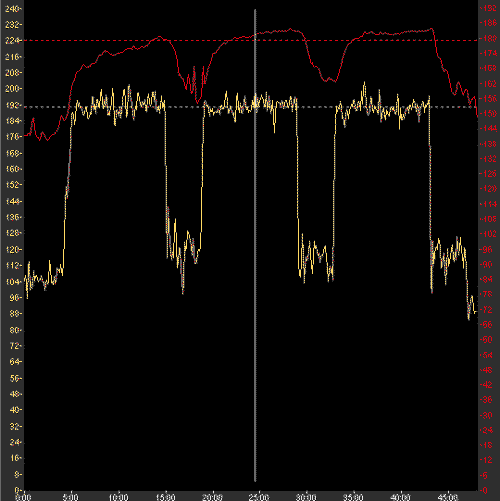
A Tempo Ten session performed by a very light, elite, lady rider
remember power numbers mean nothing if you don't know the weight of
the rider...
I was pleased with my recent Ramp Test and my numbers were better than last year. But now I'm doing some of my sessions, I can bang out higher than the programme efforts for the shorter sessions, but am struggling to hit the numbers on the longer sessions (or vice versa!). Is this normal?
Asked by around 60% of the riders here in Jersey and in various guises from riders around the world!!
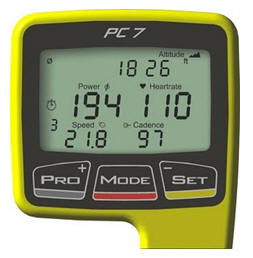
It always amuses me that riders are deliriously happy when they can ride a few watts higher than a "perceived set target" in our programmes. But fall in to an abyss of depression when they miss a 300 watt target by just five watts! Or 1.6% in real terms...
The reasons for not being able to hit a "simple" number are many and varied. I'll try to cover the unfeasibly inexhaustible list as concisely as I can. But be warned, it may get a bit geeky and have loads of medical words!
Here are some of the reasons I say, in almost every communication I make, to the point where these letters are worn smooth on my keyboard ~ PLEASE IGNORE THE NUMBERS!

muscle mass and capillary density have an
influence
my legs caught on a fly8 camera...
Same Difference
Just because two riders have the exact same FTP
(Functional Threshold Power) does not mean that
they will both have exactly the same
VO2max,
Maximum Lactate Steady
State wattage, Peak Maximal Power,
heart rate or
lung capacity.
The variables that go in to producing the results of a defined Ramp Test effort are so huge, it's beyond the scope of this little faqtet.
But for starters, there's plasma volume, blood oxidation, glycogen levels, muscle mass and fiber mix, motivation, rested state, temperature, time of day, bike set-up, muscle capillarization, hematocrit levels, I could go on, and on and on and on...
And all this is compounded by the fact that you are literally setting up to twelve weeks of training sessions based on the results of a 12 minute effort that was taken on a random day in the life of a cyclist.
It would be just as accurate to set programme parameters by eye colour.
 Just,
for a minute, let's assume the impossible had happened, and I'd
found ten identical riders.
Just,
for a minute, let's assume the impossible had happened, and I'd
found ten identical riders.
All weigh exactly the same, were all born on the same day, all have the same gender and all have scored exactly the same Maximal Aerobic Power from a Ramp Test.
How fantastic would that be? Because I could then prepare for them, exactly the same performance improvement programme and give them all exactly the same power numbers to work to for each session.
They would all then ride to the numbers and improve at exactly the same, predictable, progressive rate. At the end of their twelve week development programme, we would have ten riders who would retest and all produce the exact same (but higher) FTP result again. Wouldn't we?
If you just answered yes, think about what you just said, and go back to the top of the page and start again!
Power Data
Now I have A LOT of power files. I
ride around 12,000 kms a year, and since 2003, all of my rides have
been with a power meter. In the last sixteen years, I've
gathered the data of around a thousand tests. And monthly, I
get sent hundreds of rider power files.
I recently, upgraded my analysis software and had to import all my power files in to it...

Nearly ten thousand of them! Trust me, I've crunched the numbers. No two riders have the same relationship mix of 60/20/5 minute power, let alone any of the other variations we use.
If I was to prescribe a power number for each "non-standard" effort, it would be wrong and you would not improve at your optimal rate.
Getting The Hump
Rules, as the great man (Douglas Bader) once said, are for the guidance of the
wise and the obedience of fools. Now I wouldn't be so
impudent as to imply that those who follow the numbers are fools,
but if you do, you are missing a serious, performance-enhancing,
trick.
We flamme rougers aren't known as the Rebel Alliance for nothing! Our job is to set rules, not follow them...
Here's another pretty chart...
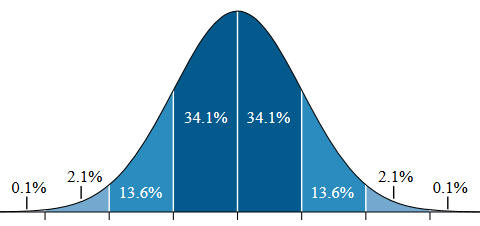
We are all at some point on this chart, no matter what the reason...
The Bell Curve (above, but I'm sure you worked that out for yourself!), is one of the basic fundamental concepts used in the exhilarating, heady world of statistical analysis. I've used these many times before in "real life" but I have now, just for you, found a fantastic, and more useful, home for them right here in our wonderful world of performance cycling.
For our Tempo Ten efforts, as shown in the very top graphic, we know that the general effort that gives us the physiological response we are after, is approximately 80% of FTP.
If we had a 100 riders all with exactly the same FTP, we could assign a "known wattage" as their Tempo Ten effort in the programme. This is designated by the median white line in the middle of the hump.
The hump profile designates the perception levels of the riders, riding to the set number we gave them. Far left is very easy, far right is very hard.
When attempting this session, at this effort, approximately 50% of our riders would fall to the left of the median central line, and another 50% would fall to the right of it.
Around 34% would struggle, or slightly struggle to hit the number, and around 16% would really struggle to hit the number.
And it's the same for beating it; around 34% would "just" beat it, but 16% could easily beat it and would find the session less than optimum.
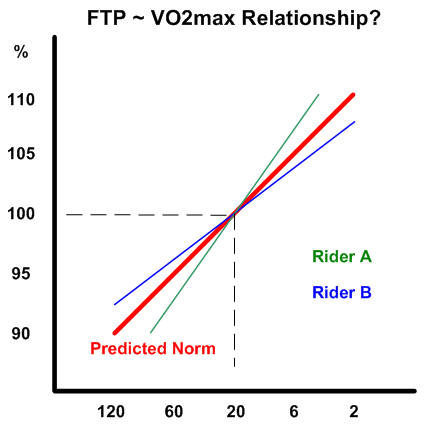
rider a a struggles on the aerobic intervals
but out-performs the norm on the anaerobic (muscular-enhanced)
efforts
Role Reversal
Exactly the same curve will reveal itself, if we were to plot
the outputs of the same hundred riders across the more intense,
shorter VO2max intervals. These efforts are generally run at
around 110% FTP.
But the bizarre thing is, the same riders would not be in the same part of the chart as they were before. Some that found the Tempo session incredibly easy, would find the VO2max session incredibly hard.
It's doubtful that those that found the Tempo efforts really hard would find the VO2max easy, but it is possible!
And this is why it's impossible to have a "cookie cutter" approach to working with humans. Embrace the difference, cuddle the ambiguity and laugh in the face of the numbers.
Ride each session as best you can, and whatever the number is, it's right, for that session, on that day, at that time, in your current state of fitness. If it's higher than the guideline, fantastic. If it's not, so what? You did your best, that's all anyone can ask.
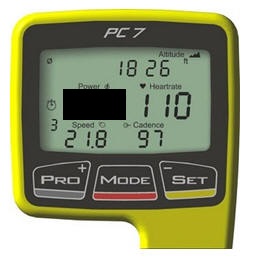 Personally, I ride all my
turbo sessions "blind".
Personally, I ride all my
turbo sessions "blind".
I cover my SRM readout with a bit of insulating tape to hide the power number.
You can easily create a Garmin screen if you use one to hide the data you don't want to see.
Ride each session to the best of your ability for the timeframe chosen; then analyse the data AFTER your ride. Try it for a month, what have you got to lose?
Have fun...
To see why I don't recommend you ride to heart rate numbers, take a look here, for part two of this FAQsheet...








